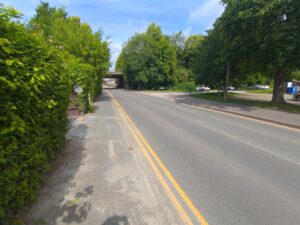Engineers at Ford’s Research and Engineering Centre in Essex are testing smart driver alert technology – in the form of visual displays and warning tones – to clearly convey the location of other road users or pedestrians.
In addition, they are testing the use of intuitive sounds – such as footsteps, bicycle bells and the sound of passing cars – rather than a single tone.
Initial tests revealed that drivers using Directional Audio Alerts were significantly more accurate when it came to identifying potential hazards and their position.
“Today’s warning tones already inform drivers when they need to take care and be vigilant. Tomorrow’s technology could alert us to both exactly what the hazard is and where it is coming from,” said Oliver Kirstein, SYNC software engineer, Enterprise Connectivity, Ford of Europe.
Ford vehicles currently feature driver assistance technologies that use a suite of sensors to identify when pedestrians, cyclists and other vehicles are nearby. These technologies offer visual and audible alerts and if necessary, apply emergency braking.
They say directional Audio Alert takes these warnings a step further. A Ford-developed software uses the information from the sensors to select the appropriate sound and play it through the speaker closest to the obstacle.
Ford reports that tests in a simulated environment showed that drivers alerted by Directional Audio correctly identified the nature and source of the hazard 74% of the time. Even just emitting a regular tone from the appropriate speaker enabled the driver to correctly identify the location of the object 70% of the time.
Engineers also set up a real-world scenario on the test track, with a vehicle backing out of a parking space, an approaching pedestrian and the footsteps alert. Participants in the test responded positively to the footsteps sound, especially when this intuitive alert was played through a specific speaker.
In future, Ford engineers believe that those results might be further improved by using 3D spatial sound similar to that used in cinemas and gaming to better enable drivers to identify the source of the hazard.
(Picture – Ford)






















